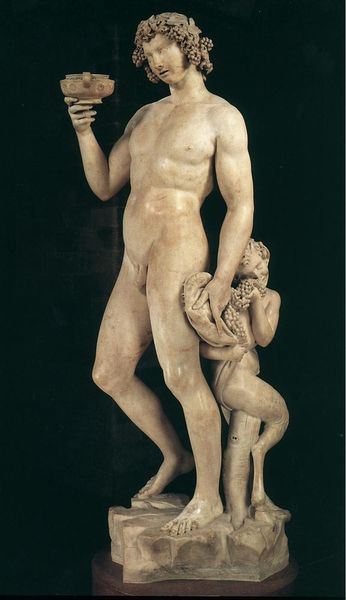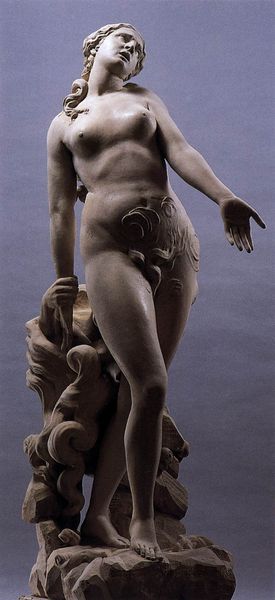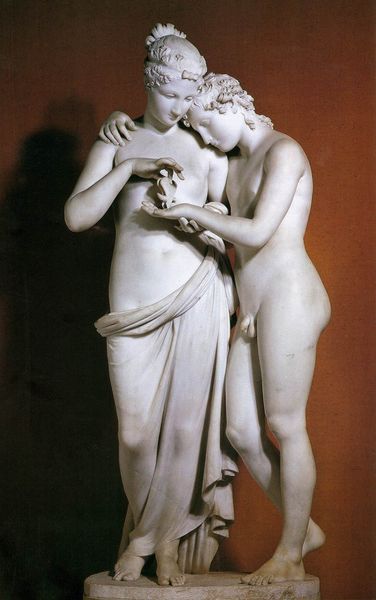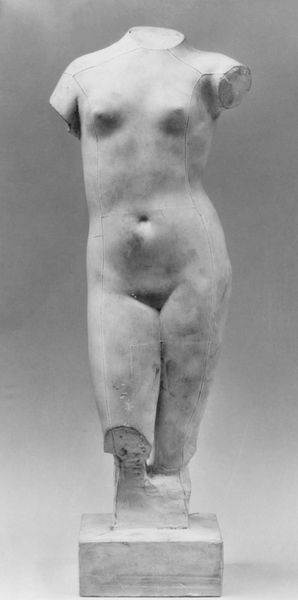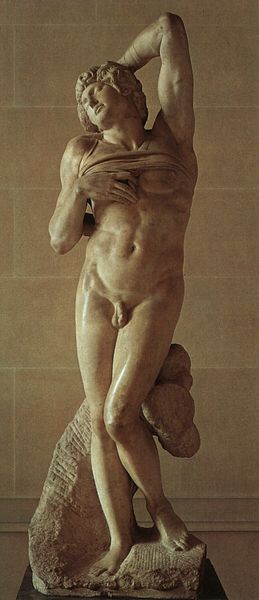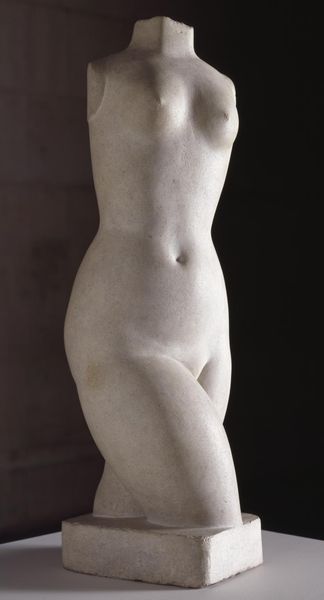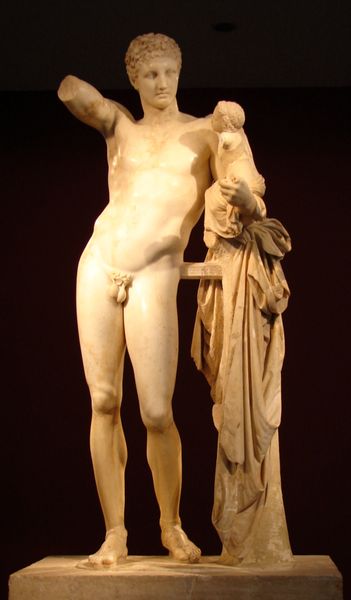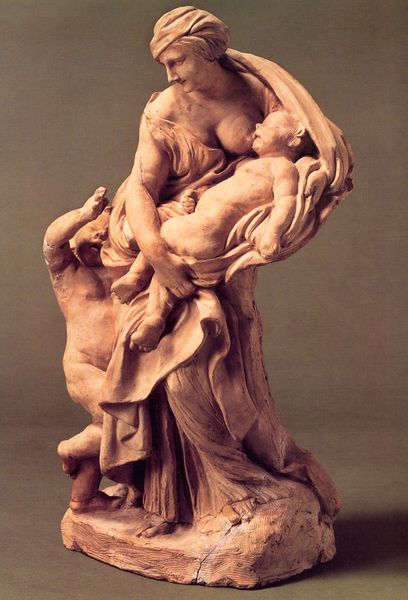
carving, sculpture, marble
#
statue
#
high-renaissance
#
carving
#
sculpture
#
classical-realism
#
figuration
#
sculpture
#
mythology
#
marble
#
nude
#
male-nude
#
statue
Copyright: Public domain
Editor: We are looking at Michelangelo's *Apollo*, a marble sculpture dating back to 1530. It's currently housed in the Bargello Museum in Florence. The figure's pose seems caught between movement and repose, the contrapposto so subtle, it's almost imperceptible. How would you interpret its visual language? Curator: Note the intricate manipulation of line and mass. Observe the contrast between the smooth, polished surfaces of Apollo's skin and the rough-hewn texture of the supporting element. The composition guides the eye upward, from the base to the gentle curve of the neck and head, emphasizing the potential for implied movement, what could be. Semiotically, the tension created by the unfinished areas and the defined musculature can suggest not perfection achieved, but in the making. What aspects of structural relationships within the sculpture are you most drawn to? Editor: I find the unfinished quality of the piece intriguing, especially compared to Michelangelo's more polished works. I hadn't considered that the smoothness contrasting with the roughness could suggest this artistic evolution. It really draws attention to the artist’s hand, doesn’t it? Curator: Indeed, the interplay of textures disrupts a singular, resolved reading. The surface embodies both intention and contingency. In what ways does that disruption impact our understanding of the subject of *Apollo* himself? Is the work meant to convey his active becoming? Or is the work a deconstruction of classical heroism altogether? Editor: This makes me see the piece in a completely new light, seeing it less as an object and more like an invitation to decode the sculpture itself. Curator: Precisely. The focus on intrinsic formal properties allows us a unique lens into meaning-making, irrespective of conventional contextual frameworks. I learned something myself from our close look today.
Comments
No comments
Be the first to comment and join the conversation on the ultimate creative platform.
